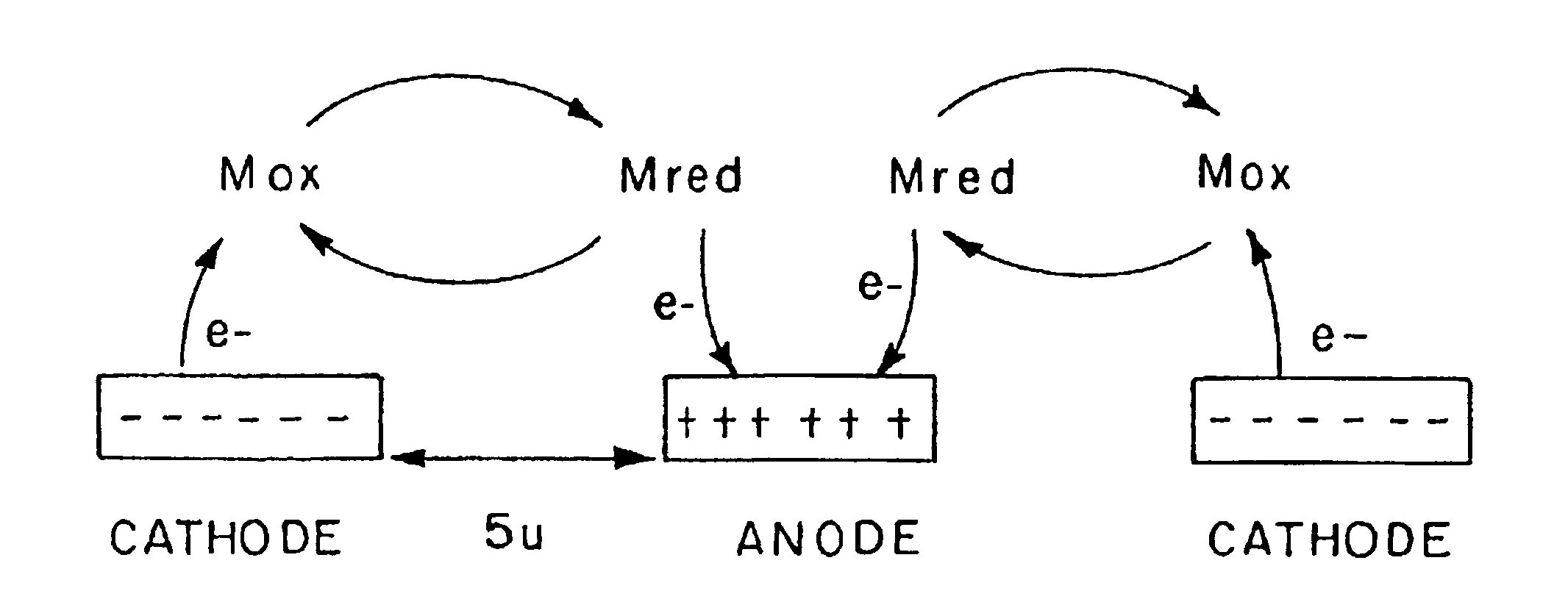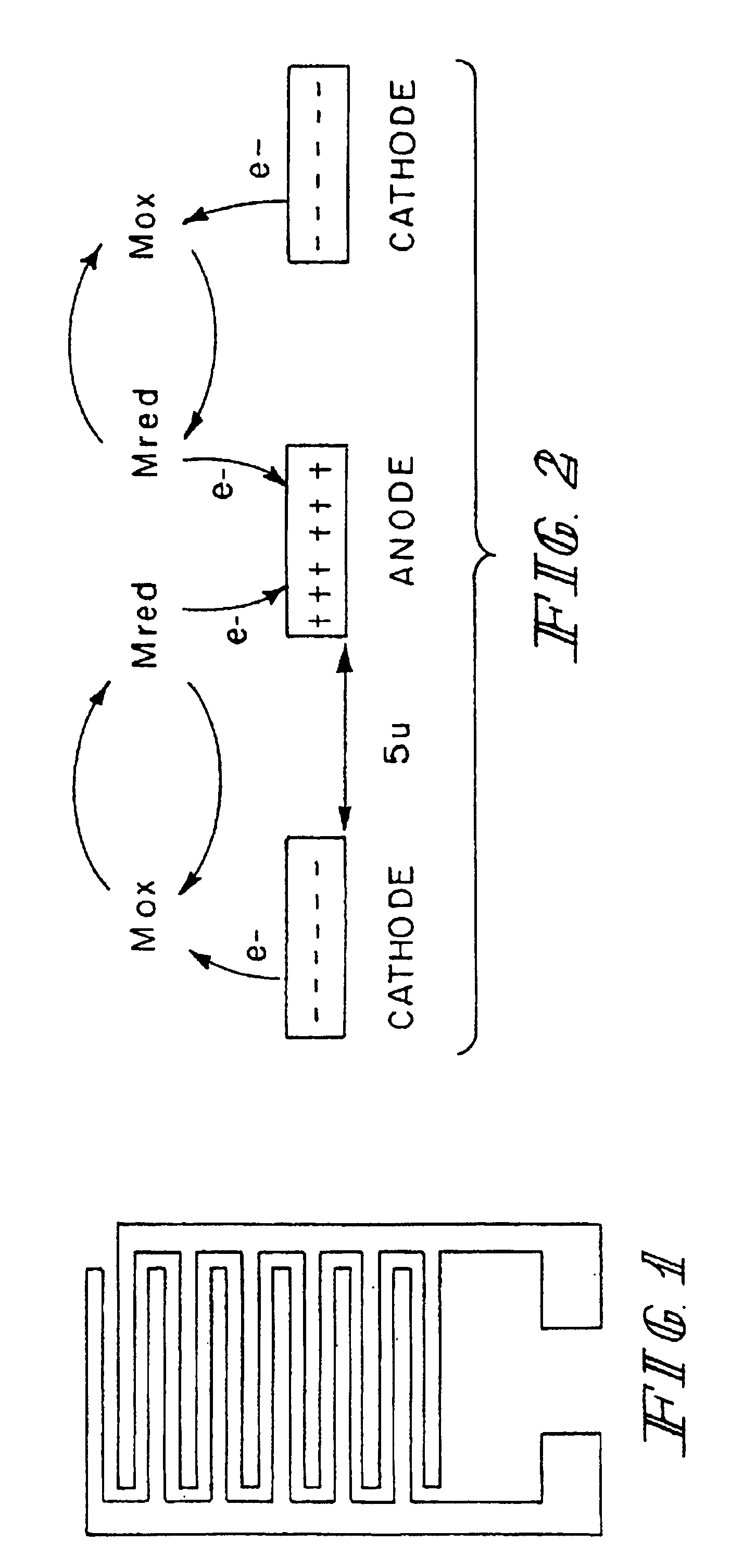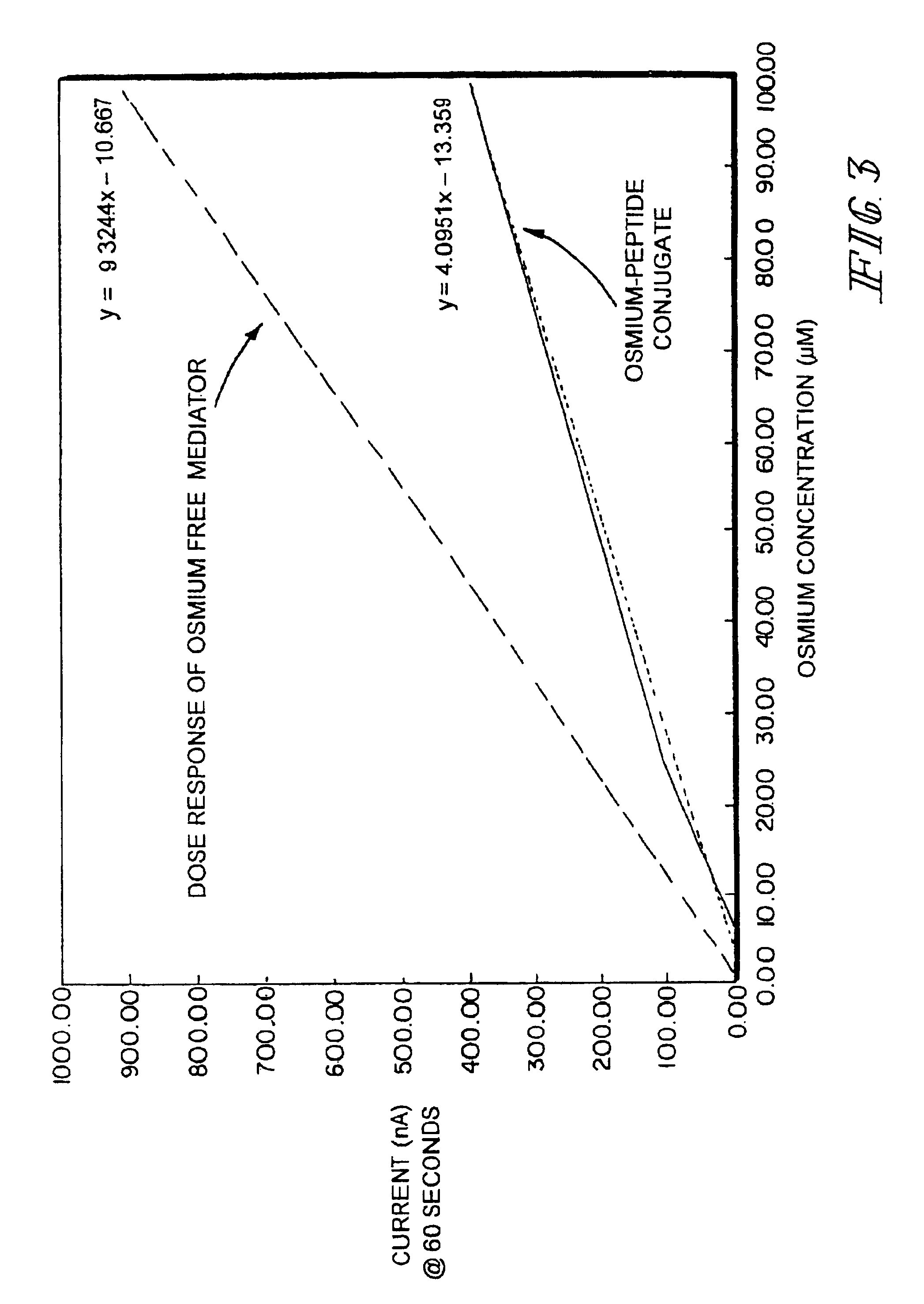Method and device for electrochemical immunoassay of multiple analytes
an electrochemical immunoassay and multiple analyte technology, applied in the direction of liquid/fluent solid measurement, assay label, peptide, etc., can solve the problems of lack of specificity, lack of sensitivity and lack of specificity, interference by charging and matrix polarization currents,
- Summary
- Abstract
- Description
- Claims
- Application Information
AI Technical Summary
Benefits of technology
Problems solved by technology
Method used
Image
Examples
Embodiment Construction
[0030]One aspect of the invention is a method for measuring the concentration of one or more analytes in a liquid sample. The method enables two or more independent amperometric measurements of the sample on a single electrode structure.[0031]The method comprises[0032]contacting a volume of said liquid sample with[0033]1) predetermined amounts of at least a first and second redox reversible species, each respective species having a redox potential differing by at least 50 millivolts from that of each other species, at least one species comprising a liquid sample diffusible conjugate of a ligand analog of an analyte in the liquid sample and a redox reversible label, said conjugate capable of competitive binding with a specific binding partner for said analyte, and[0034]2) a predetermined amount of at least one specific binding partner for each analyte to be measured; and[0035]electrochemically determining the concentration of each of said diffusible redox-reversible species in the li...
PUM
| Property | Measurement | Unit |
|---|---|---|
| anodic potential | aaaaa | aaaaa |
| anodic potential | aaaaa | aaaaa |
| volume | aaaaa | aaaaa |
Abstract
Description
Claims
Application Information
 Login to View More
Login to View More - R&D
- Intellectual Property
- Life Sciences
- Materials
- Tech Scout
- Unparalleled Data Quality
- Higher Quality Content
- 60% Fewer Hallucinations
Browse by: Latest US Patents, China's latest patents, Technical Efficacy Thesaurus, Application Domain, Technology Topic, Popular Technical Reports.
© 2025 PatSnap. All rights reserved.Legal|Privacy policy|Modern Slavery Act Transparency Statement|Sitemap|About US| Contact US: help@patsnap.com



